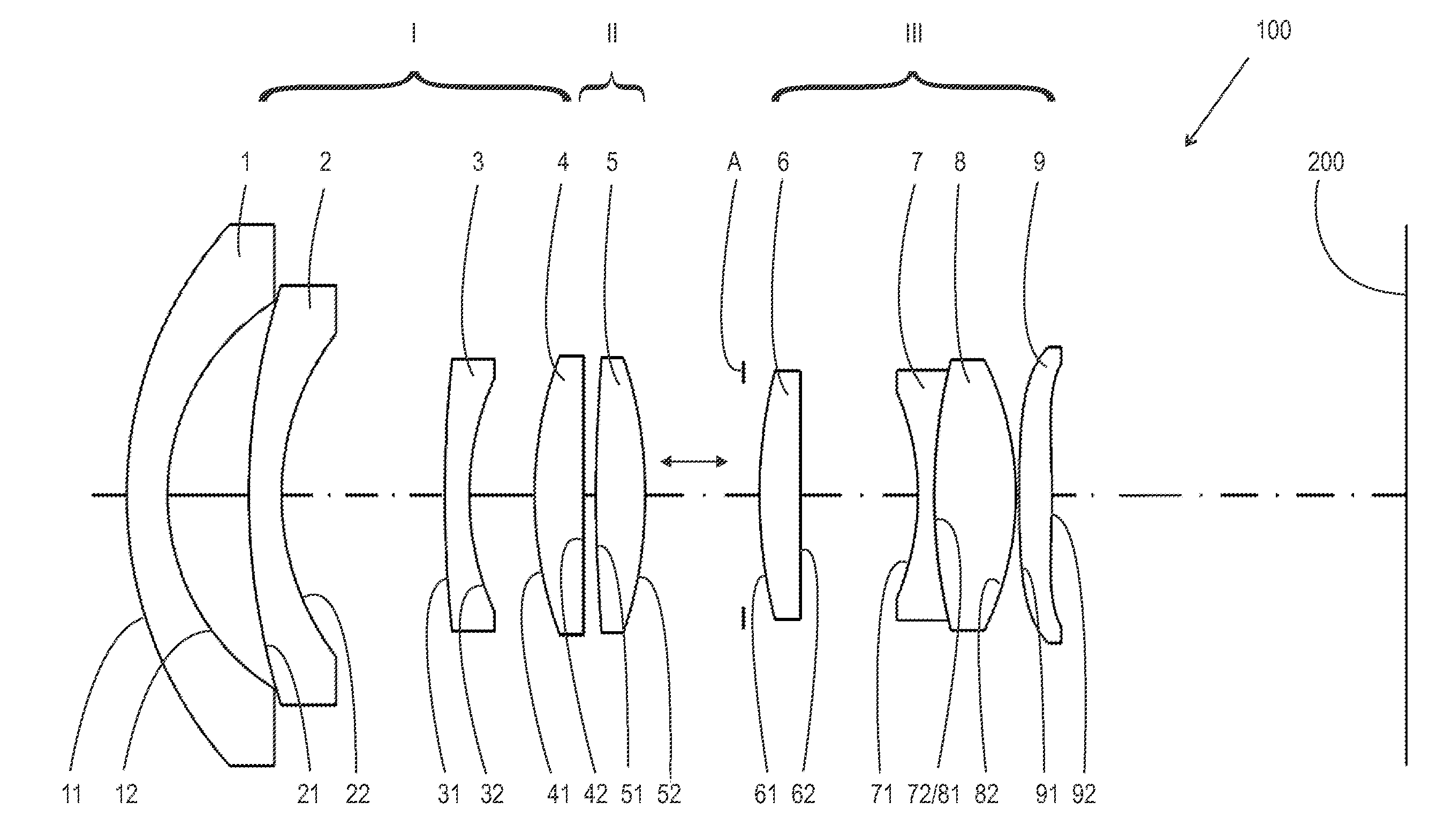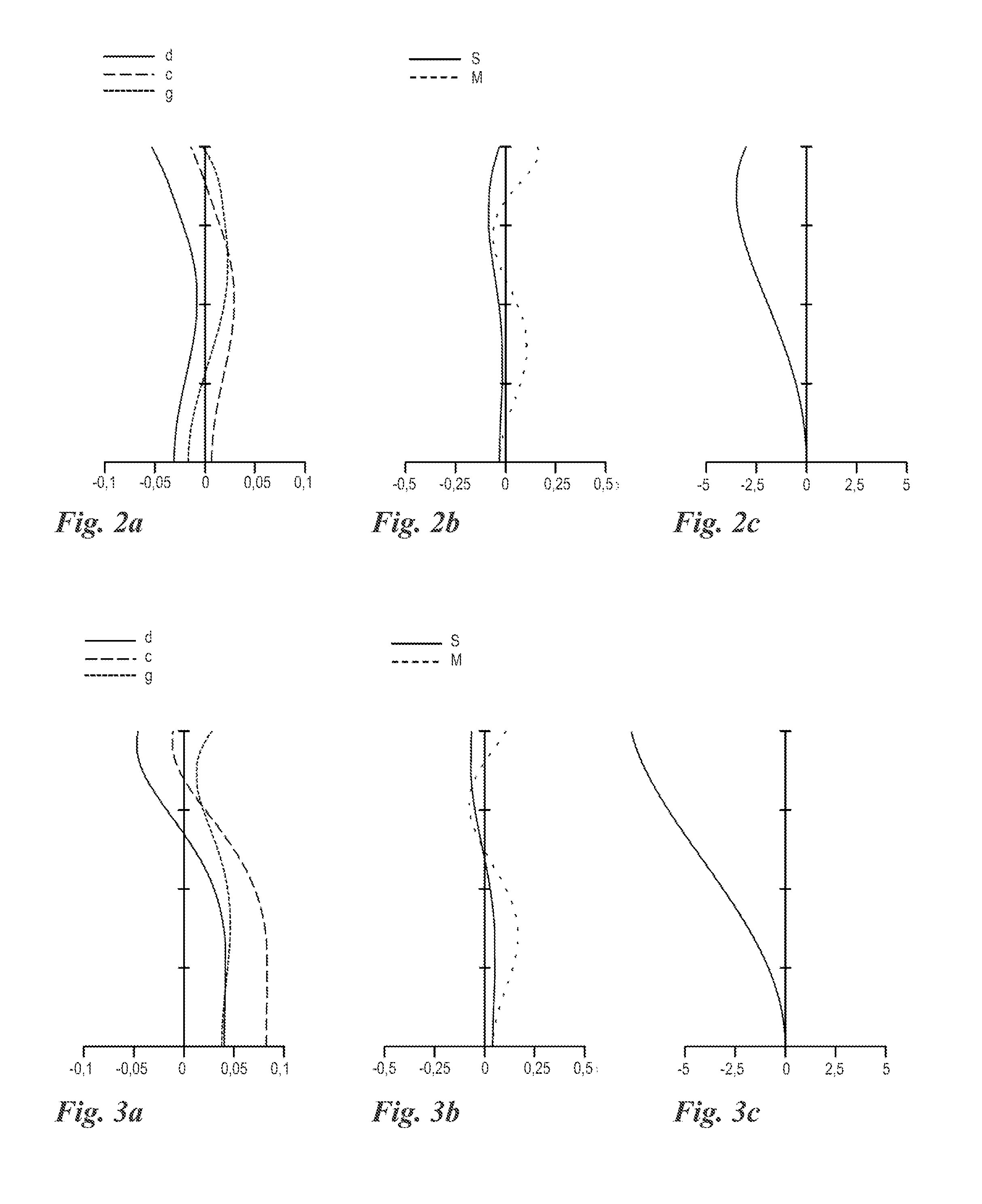Photographic wide-angle lens system with internal focusing
a wide-angle lens and lens system technology, applied in the field of wide-angle lenses with internal focusing, can solve the problems of frequent limitation of optical capacity, achieve the effect of reducing the focal length of the lens system, improving optical capacity, and facilitating the installation of a motorized driv
- Summary
- Abstract
- Description
- Claims
- Application Information
AI Technical Summary
Benefits of technology
Problems solved by technology
Method used
Image
Examples
first embodiment
[0027]FIG. 1 illustrates a wide-angle lens system 100 according to the invention. The lens system 100 serves for imaging an object (not shown) onto an image plane 200. The lens system 100 comprises a front array I arranged on the object side, a rear array III arranged on the image side, an aperture diaphragm A arranged on the object side of the rear array III and the focusing array II arranged between the front array I and the aperture diaphragm A. The front array I comprises a first lens 1 with an object-side surface 11 and an image-side surface 12, a second lens 2 with an object-side surface 21 and an image-side surface 22, a third lens 3 with an object-side surface 31 and an image-side surface 32, as well as a fourth lens 4, with an object-side surface 41 and an image-side surface 42. The lenses 1, 2, 3, 4 of the front array I are arranged in a reciprocally rigid manner. The first lens 1 is designed as a negative meniscus lens, its object-side surface 11 comprising a larger radiu...
second embodiment
[0036]FIG. 4 illustrates a wide-angle lens system 100′. The fundamental configuration is the same as in the embodiment of FIG. 1; for that reason, when describing FIG. 4, merely the significant differences to FIG. 1 will be detailed. For the rest, reference is made to what was stated above. This specifically also applies to the reference signs introduced and used in conjunction with FIG. 1 and also with FIG. 4.
[0037]The basic configuration of the embodiment of FIG. 4 compared to the basic configuration of the embodiment of FIG. 1 is characterized above all in that the front array I consists merely of three negative meniscus lenses 1, 2, 3. A fourth lens of the front array I is not provided in the embodiment of FIG. 4. The fact that the fourth lens is absent is compensated by the introduction of a further aspheric surface, namely the object-side surface 61 of the sixth lens 6, as shown in the following Table 2. The absence of the fourth lens cannot be compensated completely, however,...
third embodiment
[0043]FIG. 7 shows a lens system 100″ according to the invention which likewise essentially has the same basic configuration as the embodiment of FIG. 1, which is why here as well only the differences from the embodiment of FIG. 1 will be dealt with. For the rest, reference can be made to what has been stated above. In particular, the same reference signs will be used that were already introduced in conjunction with FIG. 1.
[0044]The basic configuration of the lens system 100″ according to FIG. 7 differs from the one of the lens system 100 of FIG. 1 primarily because of an additional tenth lens 10, which, as a negative lens, particularly as a biconcave lens, in particular as a biconcave lens the object-side surface 101 of which has a larger radius of curvature than its image-side surface 102. This additional tenth lens 10 permits a reduction in the number of aspheric surfaces by one. Preferably, the image-side surface 52 of the focusing lens, i.e. the fifth lens 5, is designed spheri...
PUM
 Login to View More
Login to View More Abstract
Description
Claims
Application Information
 Login to View More
Login to View More - R&D
- Intellectual Property
- Life Sciences
- Materials
- Tech Scout
- Unparalleled Data Quality
- Higher Quality Content
- 60% Fewer Hallucinations
Browse by: Latest US Patents, China's latest patents, Technical Efficacy Thesaurus, Application Domain, Technology Topic, Popular Technical Reports.
© 2025 PatSnap. All rights reserved.Legal|Privacy policy|Modern Slavery Act Transparency Statement|Sitemap|About US| Contact US: help@patsnap.com



